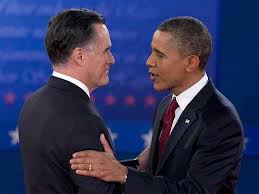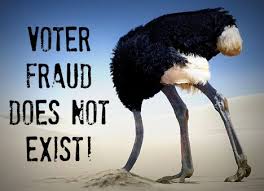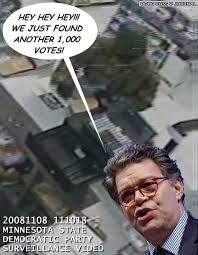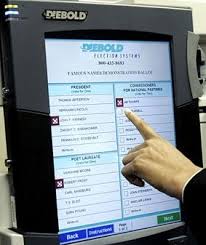NOTE: This is part 2 of a multi-part series on Voter Fraud in which we’ll address the different types of voter fraud, how widespread each may be, and how successful voter fraud is in affecting elections.
How widespread is voting/election fraud?
In Part 1, we briefly touched on some of the methods used by fraudsters to create an advantage for their candidate or party. Now we’re turning to the question of how often fraud occurs. Is it rare (as democrats would have us believe) or widespread enough to shake our confidence in the election process, which the evidence seems to support?
Here are some examples:
This first report of fraudulent activities is taken from the Republican National Lawyers Association website and includes only the last 12 months. There are 151 entries logged and it should be noted that some of the entries contain multiple fraudulent events that occurred on the same date.
This week, the Voter Integrity Project of North Carolina released a document showing that from 2008-2012 there have been 475 cases of alleged voter fraud in North Carolina referred to district attorneys’ offices.
Florida and Maryland state election authorities and the U.S. Department of Justice were formally notified of 173 cases of voters casting ballots simultaneously in both states during federal elections. The notification resulted from an investigation by True the Vote, the nation’s leading election integrity organization.
They also discovered 6,390 people registered in both Florida and Ohio. Of those, 534 appear to have voted twice in the same federal election. The examination also discovered at least 19,000 people registered in both New York and Florida. A voter may only declare domicile in one place for each election.
Here are some more voter fraud facts from True the Vote:
- To date, 46 states have prosecuted or convicted cases of voter fraud.
- More than 2.75 million Americans are registered to vote in more than one state.
- True The Vote recently found 99 cases of potential felony interstate voter fraud.
- Maryland affiliates of True the Vote uncovered cases of people registering and voting after their respective deaths.
- The Florida New Majority Education Fund, Democratic Party of Florida and the National Council of La Raza are currently under investigation for alleged voter registration fraud.
And here are some additional instances of Voter Fraud by State.
On the other hand, the left says there is no voter fraud
Following are just a few of the comments I lifted from one article about election fraud from Politico. In general, the commenters maintain that it doesn’t exist.
- “Elections are already fraud free. When you only have less than a 0.0000001% fraud rate, you don’t need to disenfranchise millions to try to stop 1 or 2 cases.”
- “Because it’s easy to identify voter fraud if it existed. And there are no reports of it.”
- “It’d be easy to prove if it was actually happening.”
- “There is no evidence of voter fraud, let alone widespread voter fraud.”
- “Where is the study that indicates all the fraud you want to prevent?”
- “Voter fraud is a non-issue in this country. Unless you can prove otherwise, all this will lower turn out as opposed to encouraging it.”
But voter fraud can affect an election
Remember when Al Franken’s was “elected” to the Senate in Minnesota? It’s a classic example of voting fraud. And what was its impact?
By winning his election, Franken became the 60th democrat in the Senate. Enough to give Leader Harry Reid all the votes he needed to pass anything, even enough to guarantee passage of the PPACA (Obamacare).
Here’s how it happened: In 2008, the day after the November election, Republican Sen. Norm Coleman had won his re-election to the U.S. Senate. After 2.9 million people had voted, he had beat comedian Al Franken by a mere 725 votes. Apparently 725 votes fell within an adjustable margin for the democrats, so they went to work.
One heavily Democratic town miraculously discovered another 100 ballots. And, by another miracle, they were all for Al Franken. And even stranger that the official machine-printed time stamp on the miracle ballots showed that the votes were cast on Nov. 2 – two days before the election.
Democratic election officials excused the apparent error with the comment that the voting machine must have been “broken.”
But they weren’t finished yet, the miracles continued. Ballots continued to be “found” and the miracles continued until, by the end of the week, Coleman’s lead had been whittled down to a mere 188 votes.
Franken and his democratic allies continued to challenge the results and even refused to seat Coleman as they continued to “find” more Franken votes. Finally, after they had found enough, Franken was declared the winner by 312 votes. He was sworn into office in July 2009, eight months after the election.
Following the controversy, a conservative group called Minnesota Majority began to look into claims of voter fraud. When they compared criminal records with voting rolls, the group identified 1,099 felons (all ineligible to vote) who had voted in the Franken-Coleman race – more than three times’ Franken’s margin of victory. Who’d they vote for? We don’t know … but we can guess.
It’s also interesting to note that 177 people have been convicted (not just accused, but actually convicted) of voting fraudulently in Franken’s win.
This is just one example of how, when the stakes are high, the democrats will move heaven and earth (and believe it or not, even cheat) to assure that their candidate wins.
Close elections
Here are some examples of how a “few” votes can decide an election:
- United States 2000 presidential election in Florida, 537 votes
- Alaska House of Representatives District 7, 2008, 1 vote
- United States Senate election in Minnesota, 2008, 312 votes
- Oklahoma House of Representatives, 25th District, 2006, 2 votes
- Virginia Attorney General election, 2005, 323 votes
- Virginia Attorney General election, 2013, 907 votes
- Washington Governor’s race, 2004, 133 votes
- Montana House of Representatives, district 12, 2004, 2 votes
How many votes does it take to affect an election? YOUR vote and the vote of your spouse or friend could swing an election like those held in Alaska, Oklahoma, and Montana (noted above). In those examples, three votes could have resulted in sending a different individual to Congress.
Here are a few more close elections that occurred in 2012:
- Massachusetts House of Representatives, 6th District, 1%
- Utah House of Representatives, 4th District, 1%
- Montana Governor, 2%
- Washington Governor, 2%
- Minnesota House of Representatives, 6th district, 2%
- Allen West lost his Florida District 18 race by less than 1% (.006%)
- Ken Cuccinelli lost the Virginia governor’s race by 2.5%
Thirty (30) of the 435 House seats up for election in 2012 had a margin of victory of less than 5 percent.
 In the presidential election of 2012, Obama won four swing states: (Florida (.9%), Ohio (1.9%), Virginia (3.0%), and Colorado 4.7%) by 4.7% or less. If Romney had won those states, he would be President today.
In the presidential election of 2012, Obama won four swing states: (Florida (.9%), Ohio (1.9%), Virginia (3.0%), and Colorado 4.7%) by 4.7% or less. If Romney had won those states, he would be President today.
It depends on how close an election is – and that’s another reason that absentee ballots are more apt to contribute to a candidate’s win than any other method … except perhaps … machine fraud.
Computers don’t make mistakes
Well, first of all, computers almost never make a mistake – the majority of “errors” blamed on computers are more likely to be operator or software errors. So, when we talk about electronic voting machines (Direct Recording Electronic (DRE) devices), absent a mechanical or electronic malfunction, we’re talking about a device that will perform its programmed instructions exactly, over and over again, countless times, without any partisan bias – or – until one is introduced.
But (and that’s a big but) changes can be introduced into the “standard” software that can affect the operation according to the directions of the “hacker” and even wipe itself clean after doing its mischief.
Following is a report of hacking the DREs used in about 1/3 of our elections:
From Target Election Fraud, Not “Voter Fraud” by Carl Gibson, Published August 10, 2012 on Common Dreams’ progressive website.
“It’s actually really easy to rig a Diebold voting machine. In fact, a Department of Energy security assessment team figured out a way to do it via remote control. All it takes is $10 to $26 in parts, an 8th grade science education, and a key that can access a rudimentary lock for any Diebold Accuvote machine, which is easily available at any office supply store and can be copied without much of a hassle.”
“Up to 30% of Americans (including Garnet92 since that’s what my county uses) will be using these easily-hacked machines on Election Day. And that DoE security assessment team said the fact that so many of these machines can be hacked so easily without leaving a trace is a national security issue.”
And here’s another:
From How I Hacked An Electronic Voting Machine published in Popular Science, by Roger Johnson, November 5, 2012 on PS’s website.
It’s called a man-in-the-middle attack. It’s a classic attack on security devices. We’re basically interfering with transmitting the voter’s intent. You can use a logic analyzer, you can use a microprocessor, you can use a computer – basically, anything that lets you see the information that’s being exchanged and then lets you mimic the information. Sometimes you block communications, sometimes you tamper with it, sometimes you just let it pass on through. Figure out the communications going on, then tamper as needed, including with the information being sent back to the voter.
And a lot of our election judges are little old ladies who are retired, and God bless them, they’re what makes the elections work, but they’re not necessarily a fabulous workforce for detecting subtle security attacks.
We hacked two machines, the touchscreen Diebold Accuvote TS Electronic Voting Machine and the push-button Sequoia AVC Advantage Voting Machine. We didn’t have user manuals and circuit diagrams. But within 2 hours we had a viable attack on the Sequoia machine. The other machine took a little longer because we didn’t fully understand how touchscreen displays worked. But that was just a couple days. It’s like a magic trick. You’ve got to practice a lot. Someone really good with his hands who practiced a lot, we could be looking at 15 seconds to 60 seconds to execute these attacks.
It should be noted that all of the DRE manufacturers deny that their products can be hacked, but that’s what they must say – even if they were aware of a vulnerability, they can’t admit it or risk possible sales going to a competitor. If vendors telling us that their product/software was bulletproof were always right, there’d be no identity theft.
One disturbing fact about DREs is that there is really no way to accomplish a recount. Yes, you can “recount” the number of votes cast and compare with the totals, but there is no way to identify any modification of individual changes to votes. There is a lot more to consider about recounts and the security aspects of DREs. Here is a site that lists the pros and cons of a meaningful recount on a DRE. And here is a Congressional Research Service report on the security issues present with DREs.
Here’s a handy link that lets you see what voting methods are used in any selected state and what machines are used for voting in your county.
The fact that no one has yet been convicted of hacking a DRE, does NOT mean that there have been no cases of DRE hacking, just that no one has been caught yet.
 And finally, this report on election fraud can’t be complete without mentioning the shabby treatment received by our military forces around the world. These brave men and women who are sacrificing so much for this country are treated like chattel when it comes to counting their votes.
And finally, this report on election fraud can’t be complete without mentioning the shabby treatment received by our military forces around the world. These brave men and women who are sacrificing so much for this country are treated like chattel when it comes to counting their votes.
True, there are logistical difficulties involved in getting ballots to them, returning their ballots back to the proper authority, and making sure that they are included in the count, but there is no excuse for not making sure that they are assured a vote.
They are the most important ballots cast in any election. Period.
And remember the First Commandment of elections. If it ain’t close, they can’t steal it. YOU simply MUST vote.
~~~
Categories: Political




Good observation, GF. One apartment complex – that could win a lot of elections. We do sometimes forget that a very few votes COULD make the difference between an Obama and ANYONE else. I shudder to think that Gore could have been president if he’d gotten 600 more votes in Florida. All of us need to keep that in mind – and VOTE. Thanks for stopping by, GF.
LikeLike
And for God’s sake, how many, MANY times have we heard, “My vote won’t mean anything~! There’s THOUSANDS out there~!”
Your table of close elections gives the lie to that~! I figure one, JUST ONE~!, apartment complex can swing a state-wide election~! Holy Caow ~!
FANTASTIC article, Garnet,,, Thank You
LikeLike